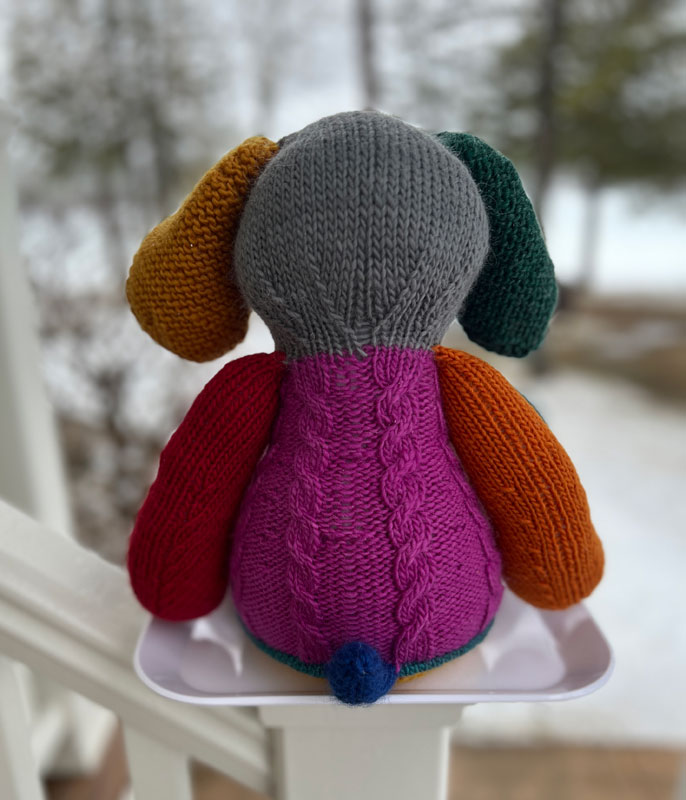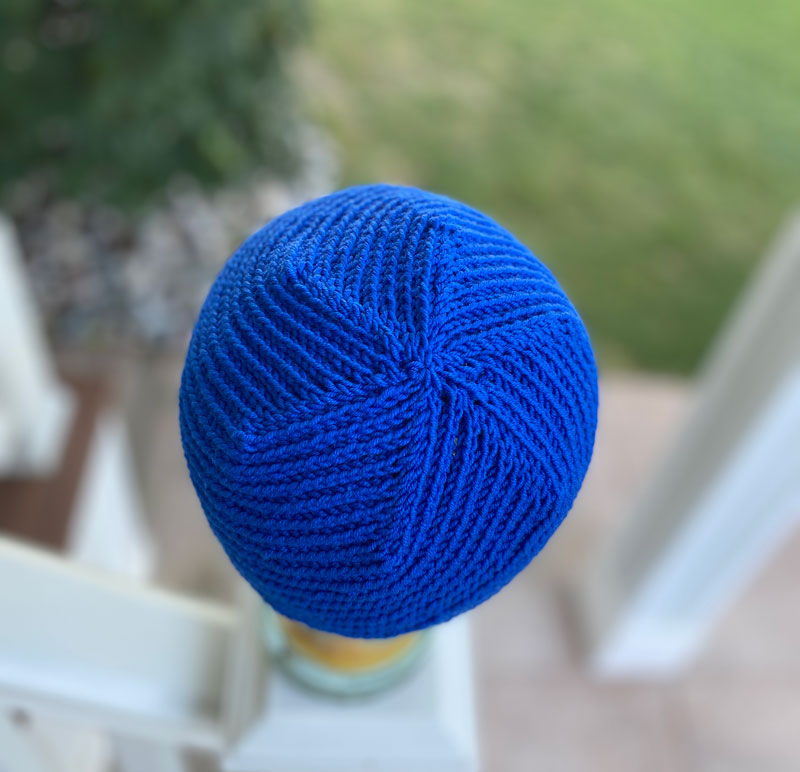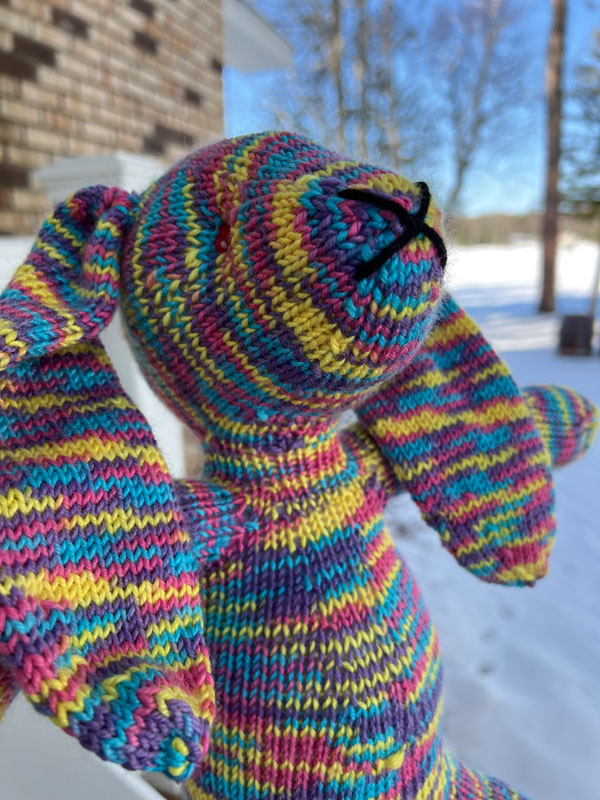
I am totally tickled with MY Jutta. Yep, I’ve decided I’m keeping her for me. My plan is to fill my new craft room with creations that make me smile. Jutta, another Annita Wilschut design, definitely fits that bill.
I knit Jutta in a mix of yarns, maybe the most prominent being Plymouth Yarn Worsted Merino Superwash Solid in the creme shade I used to knit Jutta’s body. I likely shouldn’t have used such “soft” superwash for the body though. A more rustic or at least a non-superwash would have been better. Despite being knit at a tight gauge the stuffing emphasizes all the increases and decreases and even made the head a little too heart-shaped. She’s still super-cute though. And her clothes cover a multitude of knitting sins.

Now that I think more about it, possibly Jutta’s most prominent yarn is the Adriafil KnitCol that I used for the more colorful strands of her hair. The hair is a mix of KnitCol and Schachenmayr Merino Extrafine 120 (the brown strands).
The directions for how to knit the I-cord hair strands are excellent, complete with photos. It’s quite an unusual technique that allows you to knit multiple I-cord strands direct to Jutta’s scalp. No sewing. If you’re still puzzling over the technique, maybe this will help:
The scalp is covered with rounds of staggered sets of 3 purls and 1 knit stitches. You take a small sized double-pointed needle and pick up a stitch in each of the 3 purl bumps, say for about 8 sets of bumps, all at the same “level” in the scalp rounds. Cut a length of yarn about 10 feet long (or longer). Fold the yarn in half.
Knit the first stitch at that half-way-point in the yarn. For the 2nd and 3rd stitch, knit them with BOTH strands of the yarn. For the 4th-6th stitches, do the same as 1-3 BUT with only one of the strands of the length of yarn you folded in half. You need one (folded) strand for each set of 6 stitches. Each half-strand is going to make a single 3-stitch I-cord. After you knit a row of as many pairs of 3-stitches as you can manage on your double-pointed needles, slide all the stitches to the ‘other’ end of the needle—like you would for any I-cord—and knit the next row on each cord, using the yarn that’s dangling from every third stitch to knit the first stitch of each set. Keep that up until you exhaust your length of yarn. Then start a new set of Icords. Very clever technique.

I couldn’t leave Jutta without embarrassing her with another naked shot. Love the butt! And here she is again, just to leave her looking more put together. I’ve knit Jutta once before.

Next up is Wilschut’s Olivier. I knit him in leftover oddballs of Brown Sheep Lamb’s Pride Worsted. I knit Olivier once before and used a mix of worsted weight yarns, with the result that some of the limbs “took” the stuffing differently that resulted in some limbs not quite matching size-wise. Using all the same yarn solved that.

Olivier is such an endearing pup! I’ve seen versions of Olivier on Ravelry where folks knitted him in very dignified all-grays or all-browns. Totally sweet and maybe someday I’ll knit a 3rd Olivier and work him up that way. But I’m feeling very buoyant just now and I wanted a multi-colored Olivier.

Such a fun knit!

The tail is the cutest thing since…sliced bread? A bug’s ear?
I decided I’d show you how Annita Wilschut patterns work up, all in one piece, with no sewing.

I know. A bit scary. If Olivier could speak to you he’d be saying “No, don’t show me that way.” But, pre-stuffing, is a great way to see why Annita Wilschut patterns deserve your full attention, knitters!

Wilschut’s patterns make you smile even before you complete them.

Olivier is demanding I show you him put back together. He’s eagerly awaiting being on display in my new craft room. And, in case you wonder, any visiting children will be welcome to play with him.



























